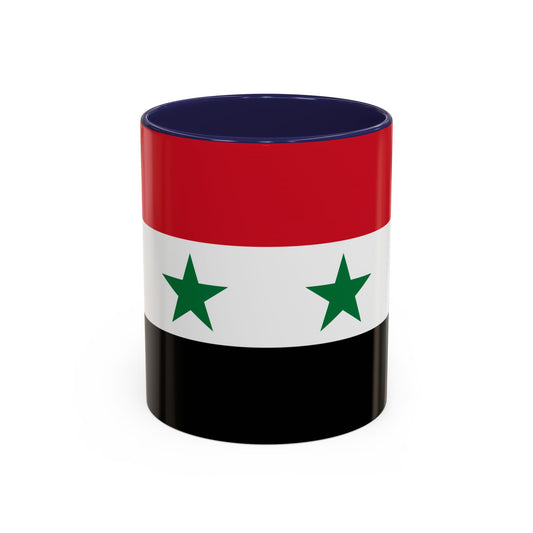-
Syria Flag Sweatshirt
Regular price $34.15 USDRegular priceUnit price / per -
Syria Sweatshirt
Regular price $34.15 USDRegular priceUnit price / per -
Syria Pillow
Regular price $22.65 USDRegular priceUnit price / per -
Syria Backpack
Regular price $59.79 USDRegular priceUnit price / per -
Syria Leather Patch Hat
Regular price $18.85 USDRegular priceUnit price / per -
Syria Trucker Cap
Regular price $14.90 USDRegular priceUnit price / per -
Syria Hoodies
Regular price $34.40 USDRegular priceUnit price / per -
Syria T-shirts
Regular price $22.79 USDRegular priceUnit price / per -
Syria Flag Hoodies
Regular price $34.40 USDRegular priceUnit price / per -
Syria Flag on T-shirt
Regular price $22.79 USDRegular priceUnit price / per
Collection: Syria
With its unique design and colors, the Syria flag holds significant historical and symbolic value. We will delve into the details of the Syria flag, exploring its history, symbolism, current relevance, and additional facts and protocols associated with it.
Overview of the Syria Flag

The flag of Syria is a striking and meaningful emblem easily recognizable by its three horizontal stripes and central symbols. At the top, a bold red stripe commands attention, followed by a clean white stripe that houses two green stars, and finally, a deep black stripe anchors the flag at the bottom. This arrangement creates a visually compelling flag with deep historical and cultural significance.
The presence of the two green stars in the middle of the white stripe is particularly distinctive, setting the Syria flag apart from other flags with similar color schemes in the Arab world. Each color and symbol on the flag has been carefully chosen to reflect the nation's values, struggles, and aspirations, creating a powerful national symbol that resonates with Syrians at home and abroad. The flag’s design speaks to the country’s past but also its present and future, encapsulating the essence of the Syrian identity in a simple yet profound way.
Historical Context of the Syria Flag
The evolution of the Syria flag is closely tied to the country's tumultuous history, marked by colonial struggle, brief unions, and political upheaval. Today's version of the flag was officially adopted on March 30, 1980, but its origins trace back to the era of the Arab Revolt against Ottoman rule during World War I. This period saw the creation of the Arab Liberation Flag, which featured similar colors and symbolized Arab nationalism and the fight against oppression.
Throughout the 20th century, Syria experienced significant political changes that were often reflected in the flag's design. After gaining independence from the French mandate in 1946, Syria underwent several flag modifications, each symbolizing a different era in the nation's governance—from establishing the Syrian Republic through various political unions, notably with Egypt, and the eventual formation of the United Arab Republic. For instance, the two green stars on the current flag initially represented the union between Syria and Egypt, although their significance has evolved.
The adoption of the current flag in 1980 marked a return to a design reminiscent of the flag used during the period of the United Arab Republic (1958-1961), signaling a nod to pan-Arabism and the enduring aspiration for Arab unity and independence. This choice was not merely aesthetic but reflected a deliberate connection to a historical narrative of liberation and unity despite the eventual dissolution of the political union with Egypt. The flag's design has remained consistent since then, surviving internal conflicts and changing regimes to emerge as a lasting symbol of the Syrian nation's identity and resilience.
Symbolism Behind the Syria Flag

The colors and symbols on the Syria flag are deeply imbued with meaning, reflecting the nation's past struggles and aspirations. The bold red stripe at the top of the flag represents the courage and sacrifice of those who laid down their lives in the quest for Syria's independence. The white stripe stands for the bright future and peace the country strives towards, symbolizing a break from its tumultuous history. Black, found at the bottom, echoes the oppression and dark times Syrians have endured throughout history.
The two green stars are central to the flag's design, which contains a complex symbolism layer. While they originally symbolized the political unity between Syria and Egypt within the United Arab Republic, their meaning has evolved over time. Today, these stars are often interpreted as a broader representation of hope and the ideal of Arab unity. This shift in symbolism reflects the changing dynamics of Syrian and Arab identity, underlining the flag's role as a living emblem of the nation's collective memory and evolving aspirations.
Current Relevance of the Syria Flag
Today, the flag of Syria plays a crucial role in representing the country on the international stage, flying high at embassies, international forums, and sports events. It serves as a symbol of national pride and unity during celebrations and mourning. Within the country, it is omnipresent at governmental buildings, schools, and public spaces, reinforcing a sense of national identity among the citizens.
Moreover, the flag has been central to political debates and movements, becoming a potent symbol for various factions within Syria's complex socio-political landscape. Its significance extends beyond mere representation; the flag embodies the Syrian people's hopes, struggles, and resilience. As such, it inspires many emotions and actions, from peaceful protests to rallying calls for unity. The evolving context within which the Syria flag is used today highlights its continued importance and relevance in shaping national and individual identities.
Additional Facts and Protocols Surrounding the Syria Flag
Handling and displaying the flag of Syria comes with its own set of protocols to ensure it is treated with the utmost respect. When hung vertically, the protocol dictates that the black stripe is positioned to the observer's left, maintaining the flag's symbolic integrity. Additionally, there's a notable tradition of displaying the Syria flag alongside the Egyptian flag during official events and ceremonies, a nod to the historical connection and unity efforts between the two nations. This act serves as a visual reminder of their shared history and the aspirations for Arab unity that once led to the formation of the United Arab Republic. Moreover, handling the Syria flag is governed by a code of respect; it must never be allowed to fall to the ground or be used in any manner that could be construed as disrespectful. This reverence for the flag underscores its deep significance as a symbol of national pride, sovereignty, and the enduring spirit of the Syrian people.






















